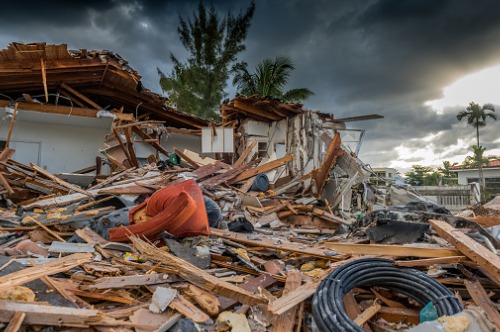

North America has seen its fair share of extreme weather over the past few years. There have been hurricanes, wildfires, hailstorms, tornadoes, and rain-driven flood events, impacting both Canada and the US. As weather events increase in frequency and intensity, insurers are more on the hook than ever to provide coverage and pay out claims.
This pressure has been felt keenly by the global property insurance markets, where rates seem to be firming after a period of sustained soft market conditions. Yvonne Steiner, head of property for Zurich Canada, explained: “From a global property insurance perspective, the industry has been in a place of extreme soft conditions for an extended period of time. What we’ve seen over this period has been coverage creep, or a lack of coverage certainty.
“We’ve seen pricing reduce to a place that is not sustainable. From an underwriting perspective, the cost of capacity has not been covered as an industry. In addition, monetary policy and liquidity have changed fundamentally in the last 20-years, risk transfer products have evolved, and the types of financial services players backstopping these types of products have changed – it’s created a bit of a perfect storm.
“It’s not necessarily anyone’s fault independently. It’s much more specific than that. We had the hurricanes (Harvey, Irma, Maria) and the earthquake in Mexico in 2017, and we’ve had a few years of significant wildfire losses. That’s when the global property markets really started to push back. Across the industry, a lot of underwriting managers and the C-suite started to say: ‘We’re just not capitalized to keep funding risk transfer where there’s no underwriting profit. If we’re truly going to be able to move through the next period of disruption, we have to be able to synthesize what we’re doing in a profitable way.’”
And that’s what’s happening in Canada. The commercial property market is starting to constrict, with carriers reducing capacity in certain high-risk sectors. Across the board, rates are on the rise and underwriters are starting to apply tighter terms and conditions to commercial property policies. Insureds and their brokers should expect much more “underwriting rigor” moving forwards, according to Steiner.
David Thompson, senior vice president at FM Global in Canada, has seen multiple commercial property market swings during his 35-year insurance career. He described the current situation as more of a risk appetite recalibration, adding that the current change is partly due to global CAT losses.
“I think the Canadian marketplace is a microcosm of the US. If you think about CAT risks, we’ve got the Pacific Northwest seismic zone, British Columbia quake, Quebec quake, [nationwide] flood risk, and so on,” Thompson told Insurance Business. “Canada’s history is tied to the fur trade, and where did fur traders like to park up and build cities? On the banks of rivers. So, we’ve got the same kinds of CAT and weather-related issues that the US does. We do have a little bit of wind exposure – just look at Hurricane Dorian which blew up the coast in September and smashed into Nova Scotia. We don’t get the same severity of hurricanes as the US, but, from a CAT perspective, we do face the same challenges.”
One peril to make the headlines in recent years is wildfire. The 2016 Fort McMurray blaze is imprinted in the memory of many Canadians as one of the worst disasters in modern Canadian history, after 589,552 hectares of land burned, costing US$9.9 billion. Across the border, parts of western USA seem to have been on fire continuously for a number of years.
“The problem with wildfires, like everything, is that when they get close to people (or people get close to them) they start to cause problems,” said Thompson. He’s referring to the wildland-urban interface, and how human development of unoccupied land is putting people in harm’s way. It’s also resulting in increased property exposures. As insurance companies deal with severe losses in areas like California, they’re forced to re-evaluate their books, and the global property markets are often impacted as a result.
“The situation in California kind of surprised people last year,” Thompson commented. “I wouldn’t say we’re surprised about the wildfire situation in Canada. Our top priority is making sure that people are aware the wildfire is just another natural risk they need to understand, manage and prepare for.”
